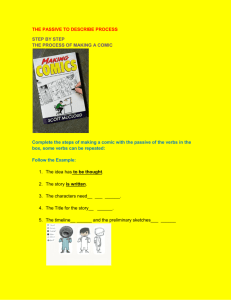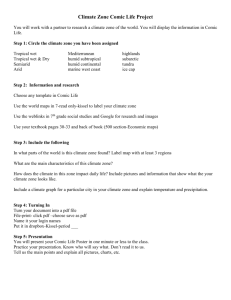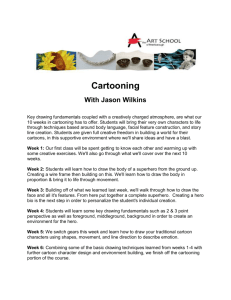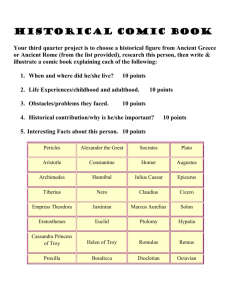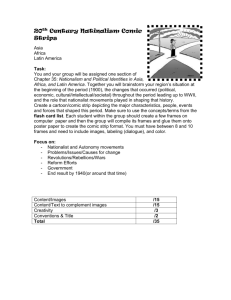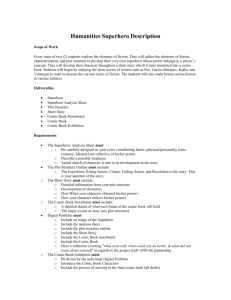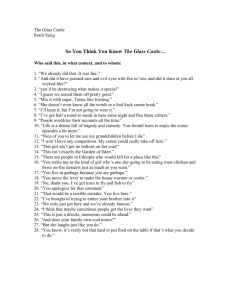Up, Up, and Away - West
advertisement
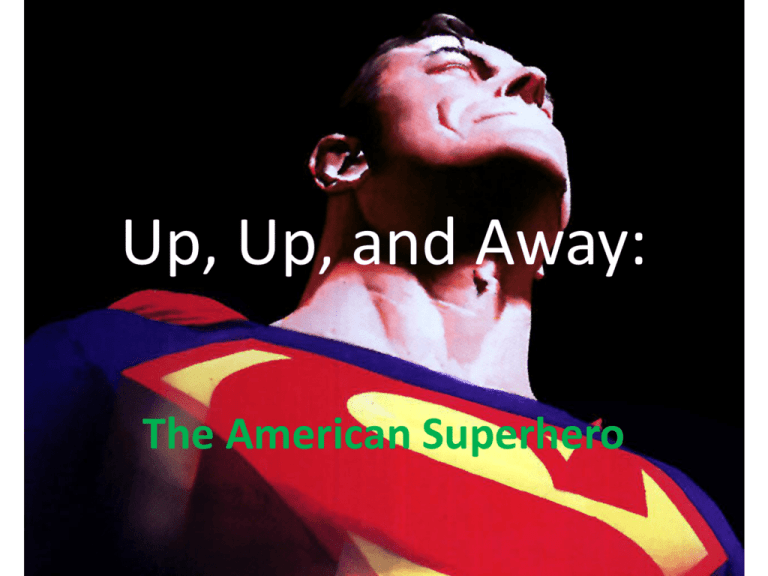
Up, Up, and Away: The American Superhero What do you think of when you say “superhero”? Let’s begin with a KWL chart. • Everyone get out a sheet of notebook paper and create 3 equal columns sideways. • Label the following columns: What I Already Know What I Want to Learn What I Learned from the Unit WHERE DID SUPERHEROES COME FROM? The Origin • The American Superhero was first invented in the 1930s. • It grew out of the pulp detective and adventure novels that were common at the time. • “Pulps” come from the cheap paper stock that they were printed on. • The first detective pulp was Nick Carter (not the boy-band guy) series in 1886. The Pulp Detectives • They were “hard-boiled.” • They rescued damsels and beat up mobsters, “sickos”, and cultists. • 1920’s The Black Mask brought the stereotypical “bareknuckles” detective that would later inspire the Humphrey Bogart’s character in The Maltese Falcon. • In the 1960s, James Bond-type spies took over the pulps. Tarzan • The first superstar of the pulps was Tarzan (1912’s All Story). • Lord Greystoke, lost heir of a rich family, is marooned as an infant in the jungle after a mutiny at sea. • It’s popularity launched a large movie franchise. The 1930’s: We need a hero! • During the Depression, Americans were looking for a hero. • Mobsters (Al Capone, for example) brought violence to the city streets during Prohibition. • The illegal alcohol trade and gambling encouraged corruption and graft in the politicians of the day. • Americans were looking for someone to save the day, but what kinds of heroes would they want? The Shadow • Started as a radio host • Became a great mystery story character • A detective & master of disguise • Armed with twin .45 automatics • Held secret knowledge. – Tibetan magic/mystic skill: “cloud men’s minds”, creates illusions, mind over matter. 1938 The Birth of Superman Let’s go over some terms we need to know. Comic Book Terms • Nemesis/Archenemy • Story Arc • Crossover • Trade Paperback • Origin • Alter Ego Literary Terms • • • • • • • • • • • • Archetype Plot Inference Onomatopoeia Dialogue Symbolism Monologue Graphic Novel Protagonist Antagonist Crisis Tragic flaw Comic Book Terms • Nemesis- the main enemy of a hero, usually associated with the hero’s origin story (Joker, Lex Luthor); synonym Archenemy • Story Arc- a series of issues of a comic whose plots connect to each other like chapters in a book usually limited to 4 to 6 issues. • Crossover- an event in which characters from one comic, company or “reality” run into characters from a different comic, company or “reality.” • Trade Paperback- a collection of issues of a comic book series • Origin- the back story of a hero in which a hero’s tragic flaw or source of his/her power is shown. • Alter Ego- the other identity that a superhero keeps. For example, Peter Parker is also Spiderman. Literary Terms • Archetype- the “blueprint” of the character in early mythology. • Plot- the series of events in a story. • Inference- The skill a reader uses to draw conclusions from clues given by the writer/artist; “to infer” is the opposite of “to imply.” • Onomatopoeia- words that imitate sounds. • Dialogue- Words exchanged between two or more characters. • Symbolism- When something stands for something else, as in a heart meaning love. Literary Terms (Cont’d) • Monologue- characters talk to themselves rather than one another. • Graphic Novel- a literary genre where pictures are used with words to convey a message. • Protagonist- the lead character in a work • Antagonist- the opposing force against the lead character; also called the foil. • Crisis- the conflict that drives the plot • Tragic Flaw- the weakness found in most heroes; largely symbolic but can be literal. How do you read a comic book? • Comic books are read from up to down and left to right like all English writing. • Manga (Japanese Comics) are not read that way. • Sometimes the conversation is layered because the characters are speaking back and forth. • Be attentive to what words are being used. Since comic books have very few words, it is important to see what carefully chosen words the author has selected. The writing will be extremely clear and concise. • Examine the pictures first on a superficial level. Most of the story will actually be told through the graphics. Notice the characters, what they are wearing, the setting and any action being depicted. This will fill in some of the details left out of the text. • Dig deeper into the picture. Notice the use of color, shadowing and facial expressions. Think about common images & symbols, such as – – – – white and light colors = good, black and darker colors = bad, smiles = happy feelings frowns or eyebrows drawn in = sad feelings. • Infer the transitions. You will need to examine the next frame the same way you did the first, then infer, or figure out, what details probably tied the two together. Unlike a book or movie, a comic is more of a snap shot portrayal of a story that moves from frame to frame. • Have fun. No matter how serious a comic book seems, there will be subtle humor to look for.
